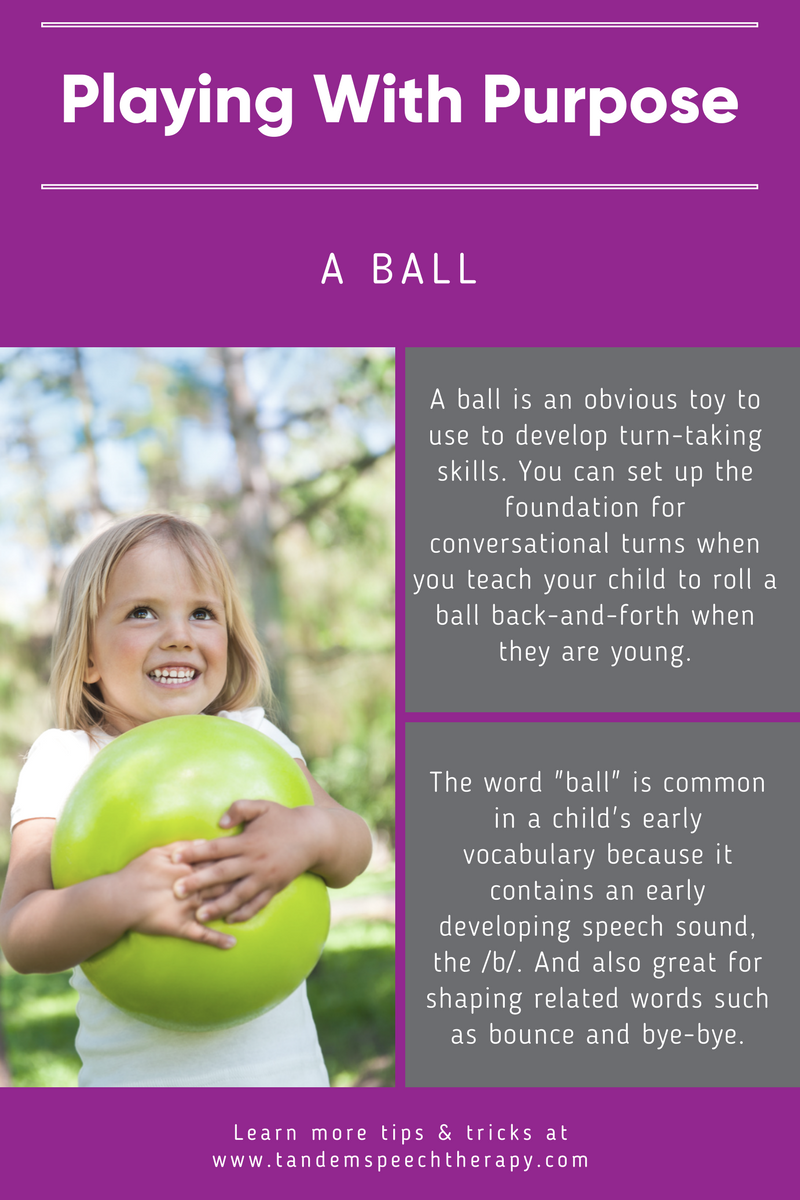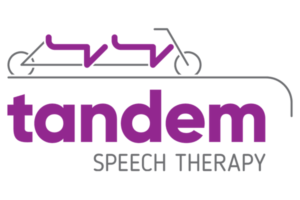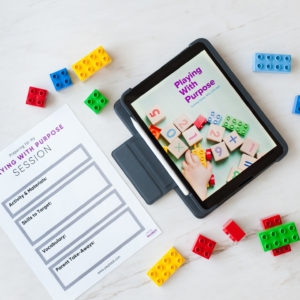That is the basis for Playing With Purpose. I help you look at what you have and explore how you can adapt it or tweak your play for language stimulation.
I was recently surprised while shopping for a birthday gift for a friend’s one-year-old; it was overwhelming! Going into the store, I knew I wanted to buy a battery-free toy that aligned with his development.
As you have read my Playing With Purpose series, you may be under the impression that you need to spend a lot of money to support speech and language development. Today, for example, I bring you a staple toy that is low cost and you may already have lying around!
In homes and in clinics across my years as a pediatric speech therapist, I’ve spent many sessions playing ball with children. Balls are simple yet engaging, and they are enticing and fun for kids of all ages.

Kids like to throw balls, and the last thing I want to happen is for your great aunt’s antique vase to get broken. Or for you to wind up with a broken nose. Trust me; you will get hit in the head one day as you PWP. If it’s the right time of year, you can likely find a beach ball at your local dollar store which is another fun option.
Top 5 Tips for Playing With Purpose Using a Ball
1. Use a ball to teach turn-taking. You can begin this with a child when they are young and just starting to sit up on their own. Get down on the floor and have your child sit in your lap. Then have another caregiver sit across from you. Help the child push/roll the ball to the person across from them. Continue back and forth as long as your child is enjoying the game. Again, this is setting up what is known as “serve and return” or reciprocal play. It is a foundational skill children must learn that will later help them engage in conversational turn-taking.
Want to learn more strategies?
Start Playing With Purpose
Learn how to purposefully and intentionally interact with your child during play and help them increase opportunities for speech and language development with our Playing with Purpose book!











